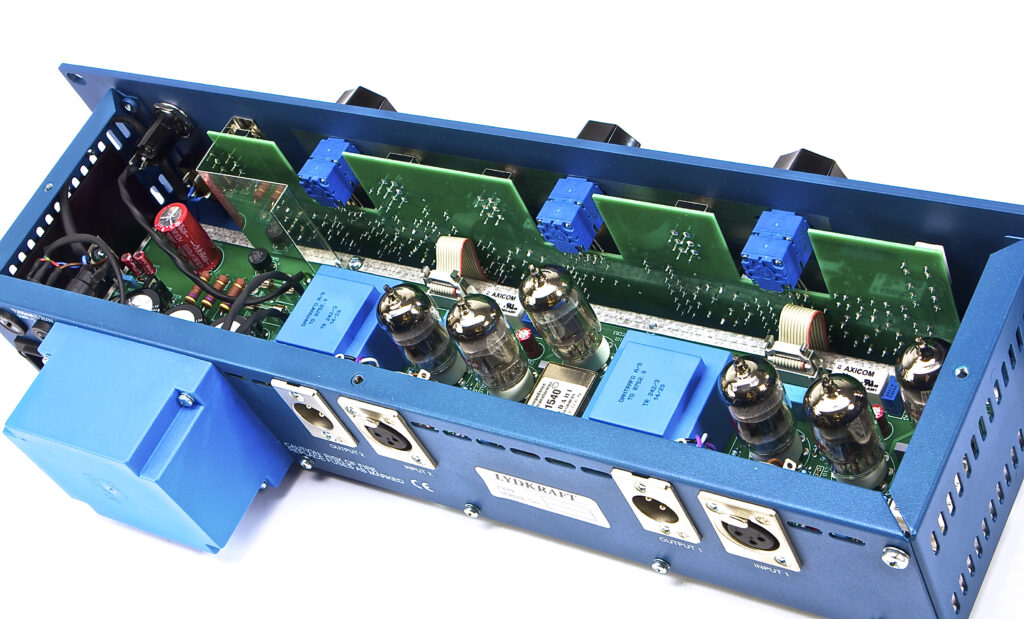The Tube-Tech HLT 2A and HLT 2A Mastering are two highly regarded equalizers in the world of professional audio engineering. Both units are designed to offer exceptional tone-shaping capabilities, but they serve slightly different purposes. Deciding which one is better for your specific needs depends on various factors, including your workflow, the type of music you work with, and whether you’re working on mixing or mastering. This article explores both units in depth, highlighting their features, differences, and applications.
Overview of the Tube-Tech HLT 2A
The Tube-Tech HLT 2A is a hybrid equalizer that combines passive and active circuits. It features high and low shelving bands, as well as a midrange control for precise tonal adjustments. Known for its smooth and musical sound, the HLT 2A is popular among mixing engineers who want to add warmth and clarity to individual tracks or buses.
Key Features of the HLT 2A
- Tube-Based Design: Like all Tube-Tech gear, the HLT 2A features a tube-driven design that adds harmonic richness and warmth to the signal.
- High and Low Shelving Filters: These filters allow for broad tonal shaping, making it easy to boost or cut frequencies with a musical touch.
- Midrange Control: A sweepable midrange band ensures flexibility in shaping the critical frequency ranges of your mix.
- Fixed Frequency Steps: The HLT 2A provides fixed frequency options for its high, low, and mid bands, which makes it easy to dial in quick adjustments.
- Applications: This unit is widely used for adding subtle enhancements to tracks like vocals, guitars, and drums, as well as for shaping subgroups or mixing buses.
Overview of the Tube-Tech HLT 2A Mastering Version
The HLT 2A Mastering is a specialized version of the standard HLT 2A, designed specifically for mastering engineers. It retains the core sonic characteristics of the original but introduces several refinements to meet the demands of precise and transparent mastering work.
Key Features of the HLT 2A Mastering
- Detented Controls: Unlike the standard version, the mastering model features detented (stepped) controls, allowing for precise recall and fine adjustments.
- Tighter Tolerances: Components in the mastering version are selected to tighter tolerances, ensuring accuracy and consistency.
- Frequency Range Adjustments: The mastering version provides more refined frequency choices, tailored to the needs of mastering engineers who require subtle and exact tonal shaping.
- Applications: This unit is ideal for finalizing mixes, ensuring tonal balance across an entire project, and adding that final polish to a record.
Key Differences Between the HLT 2A and HLT 2A Mastering
While the HLT 2A and HLT 2A Mastering share many similarities, the differences between them are significant and can influence your decision. Below is a detailed comparison:
1. Control Precision
- HLT 2A: The controls on the standard model are smooth and continuously variable, which is ideal for mixing scenarios where quick adjustments are often required.
- HLT 2A Mastering: The detented controls on the mastering version allow for precise and repeatable settings, making it indispensable for mastering workflows.
2. Application Focus
- HLT 2A: Designed for mixing, this model excels at broad tonal shaping and enhancing individual tracks or buses.
- HLT 2A Mastering: Geared toward mastering, this version offers the precision and transparency needed to achieve a cohesive and polished final product.
3. Frequency Range and Step Size
- HLT 2A: The frequency steps are designed for practical use during mixing, with a broader range to accommodate various instruments and vocals.
- HLT 2A Mastering: The frequency steps are narrower and more refined, providing the subtlety required for mastering applications.
4. Build Quality and Component Selection
- HLT 2A: High-quality components are used, but the tolerances are less strict compared to the mastering version.
- HLT 2A Mastering: The components in the mastering version are meticulously selected to tighter tolerances, ensuring superior accuracy.

Applications and Use Cases
Understanding the strengths of each unit can help you decide which one aligns better with your workflow. Below are some common use cases for each model.
HLT 2A Use Cases
- Mixing Individual Tracks: The HLT 2A is perfect for adding warmth and clarity to vocals, guitars, and other instruments.
- Bus Processing: It’s commonly used on drum buses or instrument groups to provide a cohesive tonal balance.
- Creative Sound Shaping: The broad frequency controls make it easy to experiment and add character to your mix.
HLT 2A Mastering Use Cases
- Mastering Entire Mixes: The mastering version excels at fine-tuning the overall tonal balance of a mix.
- Consistency Across Tracks: Its precise controls ensure uniformity across an album or project.
- Final Polishing: Subtle adjustments with the HLT 2A Mastering can make a mix sound more polished and professional.
Pros and Cons of Each Model
HLT 2A Pros:
- Flexible and intuitive controls.
- Excellent for creative tonal shaping.
- Adds warmth and character to individual tracks and buses.
- More affordable than the mastering version.
HLT 2A Cons:
- Lacks the precision required for mastering.
- No detented controls for recall.
HLT 2A Mastering Pros:
- Highly precise and transparent.
- Detented controls for accurate recall.
- Perfect for mastering applications.
- Superior component quality and tighter tolerances.
HLT 2A Mastering Cons:
- Higher price point.
- Less suited for creative or broad tonal shaping during mixing.
Choosing the Right Model for Your Needs
Your choice between the HLT 2A and HLT 2A Mastering depends largely on your specific needs and workflow. Below are some scenarios to help you decide:
When to Choose the HLT 2A
- You primarily work on mixing projects.
- You need a versatile equalizer for shaping individual tracks and buses.
- Your workflow requires quick and intuitive adjustments.
- Budget constraints make the mastering version less feasible.
When to Choose the HLT 2A Mastering
- You specialize in mastering and need precision tools.
- Accurate recall and consistency are critical for your projects.
- You’re looking for a unit that offers subtle and refined tonal adjustments.
- Your budget allows for the higher price of the mastering version.
Conclusion: Which is Better?
Both the Tube-Tech HLT 2A and HLT 2A Mastering are exceptional equalizers, but they are designed for different applications. The standard HLT 2A is better suited for mixing engineers who need a versatile and musical equalizer for individual tracks and buses. On the other hand, the HLT 2A Mastering is ideal for mastering engineers who require precision, transparency, and repeatability.
If your focus is primarily on mixing and you need an equalizer that can handle a variety of tasks, the HLT 2A is a clear choice. However, if you work in mastering or need an equalizer with ultra-precise controls, the HLT 2A Mastering is worth the investment. Ultimately, the best choice depends on your workflow, budget, and the type of work you do.

